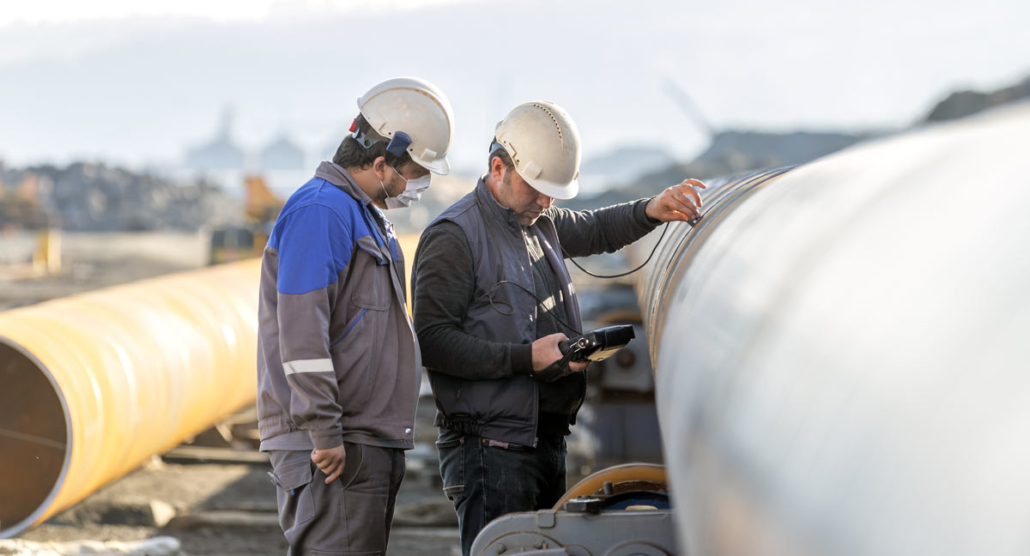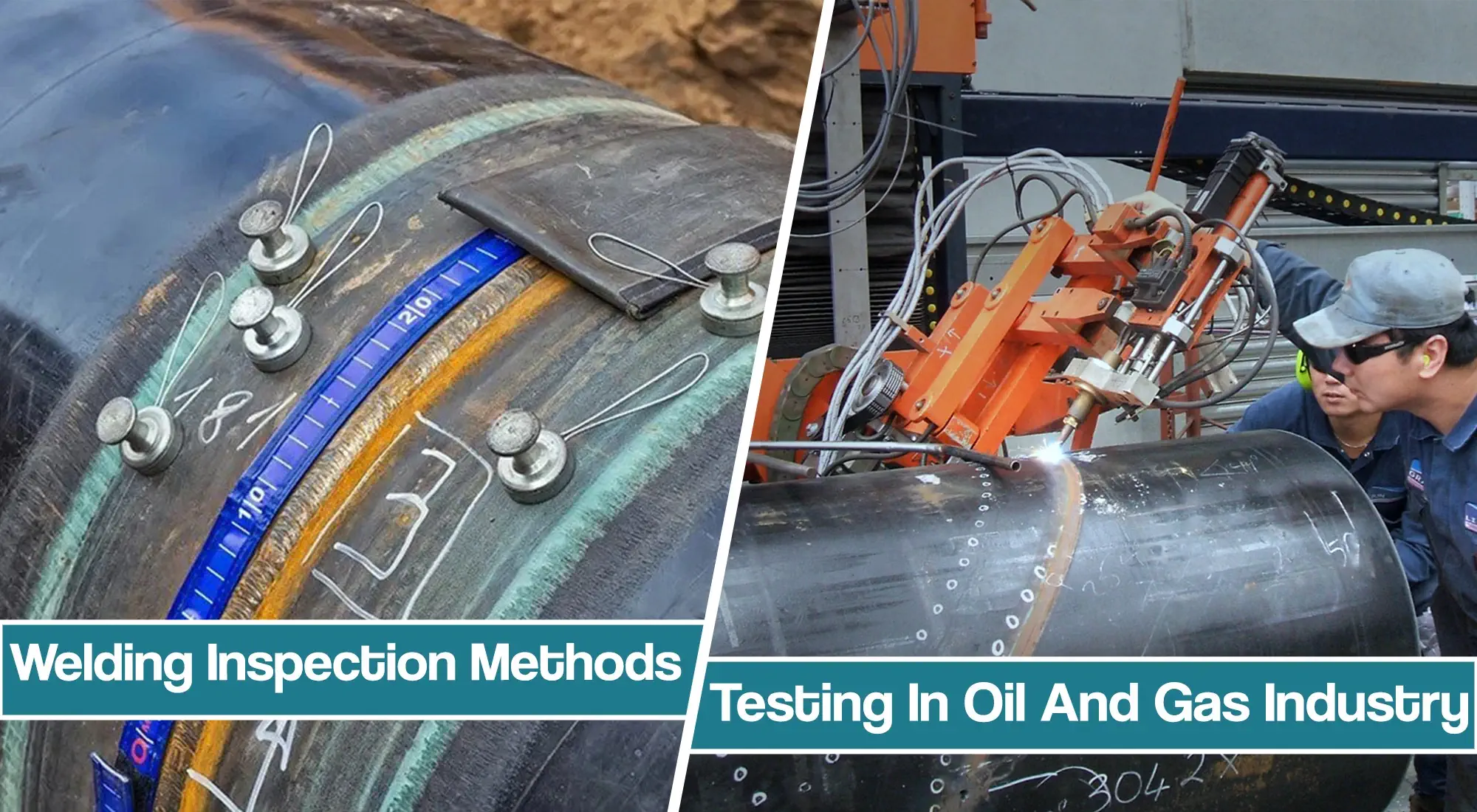Pipeline Welding Inspection: Specialist Services for High-Quality Welds
Wiki Article

Ideal Practices for Pipe Welding Evaluation: Techniques, Standards, and Procedures to Accomplish Quality Control and Compliance
Efficient pipe welding evaluation is essential for ensuring the honesty and safety and security of important framework. Recognizing the complexities included in each phase of inspection is important to attaining compliance and integrity in pipe systems.Importance of Welding Evaluation
The integrity of welded joints is vital in making sure the safety and reliability of pipeline systems. Correct welding techniques and thorough examination processes are vital to stop failures that can result in tragic cases, ecological damages, and loss of life. Pipeline Welding Inspection. Welding inspection works as a safety net, recognizing problems such as cracks, porosity, and insufficient combination before they rise into significant issuesFurthermore, pipe systems often operate under high pressure and severe problems, making the top quality of welds a lot more vital. Regulatory compliance is an additional significant element, as numerous criteria determine the top quality guarantee processes that must be adhered to in pipeline construction and upkeep. Failure to conform can cause financial losses and legal ramifications.

The role of welding evaluation extends past mere verification of workmanship; it encompasses the guarantee of long-term functional integrity. This involves a methodical approach that consists of not only visual inspections but additionally progressed non-destructive screening approaches. Ultimately, effective welding examination is an investment in the long life and safety and security of pipeline systems, guaranteeing they operate as meant while minimizing risks connected with material shortages.
Trick Examination Strategies

Aesthetic examination, commonly the very first line of protection, permits the recognition of surface flaws such as splits, damages, and porosity. Ultrasonic testing employs high-frequency audio waves to find interior defects, supplying a thorough assessment of weld integrity. This non-destructive approach is particularly efficient for recognizing stoppages that might not be noticeable externally.
Radiographic screening entails using X-rays or gamma rays to create photos of the welded joint, disclosing internal defects. This strategy offers thorough understandings yet may call for specific tools and security considerations. Lastly, magnetic fragment testing works for discovering surface and near-surface interruptions in ferromagnetic materials, making use of magnetic fields and great iron fragments.
Market Requirements and Regulations
Conformity with industry criteria and regulations is important for making certain the top quality and safety and security of pipeline welding inspections. These requirements give a structure for best practices in welding processes, products, and examination strategies, allowing companies to reduce issues and boost the honesty of pipe systems. Secret bodies such as the American Society of Mechanical Designers (ASME), the American Welding Culture (AWS), and the International Organization for Standardization (ISO) collection forth standards that are widely recognized and adopted within the market.
In the USA, guidelines from the Pipe and Hazardous Products Security Administration (PHMSA) control the safety of pipe procedures, mandating strenuous examination protocols. These standards not just serve to protect public safety and security and the atmosphere yet likewise make certain compliance with legal and lawful responsibilities. Adherence to the pertinent codes, such as ASME B31.3 for process piping, is important for maintaining operational efficiency and regulative conformity.
Moreover, continual updates and modifications to these requirements show technological innovations and advancing industry methods, stressing the requirement for companies to remain enlightened and train personnel appropriately. Eventually, robust conformity with well-known criteria cultivates count on and reliability in pipeline infrastructure, securing both possessions and stakeholders.
Reliable Assessment Treatments
Reliable assessment procedures are vital for determining prospective defects in pipe welds and making certain the total honesty of the system. An organized approach to assessment includes numerous crucial phases, consisting of pre-weld, in-process, and post-weld examinations. important site Each phase plays a crucial function in maintaining quality control.During pre-weld evaluation, it is necessary to assess the materials and joint setups, ensuring compliance with project requirements. In-process assessments entail checking welding techniques and criteria, such as heat input and travel speed, to stop issues from taking place. This stage permits for real-time changes to welding methods.
Post-weld assessments include non-destructive screening (NDT) techniques like radiography, ultrasonic testing, and magnetic fragment testing. These methods help discover inner and surface area imperfections that can compromise the pipeline's capability. Paperwork of all inspection tasks is extremely important, providing a deducible document that sustains compliance with sector requirements.
Training and qualification of assessment employees further improve the performance of these procedures. By adhering to a structured assessment procedure, organizations can alleviate risks, make certain conformity, and ultimately deliver pipelines that fulfill strict security and efficiency demands.
Typical Difficulties and Solutions
Pipeline welding assessment provides a number of typical difficulties that can impact the quality and safety and security of the end product. One considerable challenge is the irregularity in welding techniques and products, which can cause inconsistent weld high quality. To resolve this, it is essential to develop standard procedures and training for welders, guaranteeing an uniform approach throughout projects.
Ecological elements, consisting of temperature and humidity, can also influence the welding process, potentially leading to cracks or incomplete combination. Implementing regulated atmospheres and sticking to pre-weld procedures can alleviate these risks.
Final Thought
To conclude, the execution of best practices for pipeline welding evaluation is crucial for guaranteeing quality control and conformity with market criteria. A thorough approach, including numerous techniques such as aesthetic, ultrasonic, and radiographic screening, assists in the recognition of defects throughout all stages of the welding procedure. Pipeline Welding Inspection. Adherence to established policies and efficient examination treatments not just enhances the reliability and safety of pipe systems yet also alleviates risks connected with welding defects, thus promoting overall functional honestyConformity with sector standards and laws is important for ensuring the quality and security of pipeline welding examinations. These criteria offer a structure for ideal practices in welding Get the facts procedures, products, and evaluation methods, allowing companies to minimize problems and improve the stability of pipe systems.In the United States, guidelines from the Pipe and Hazardous Materials Security Administration (PHMSA) govern the safety of pipe operations, mandating extensive assessment protocols. A systematic method to assessment incorporates several crucial stages, consisting of pre-weld, in-process, and post-weld assessments.In verdict, the implementation of best practices for pipe welding inspection is necessary for making certain high quality assurance and compliance with industry criteria.
Report this wiki page